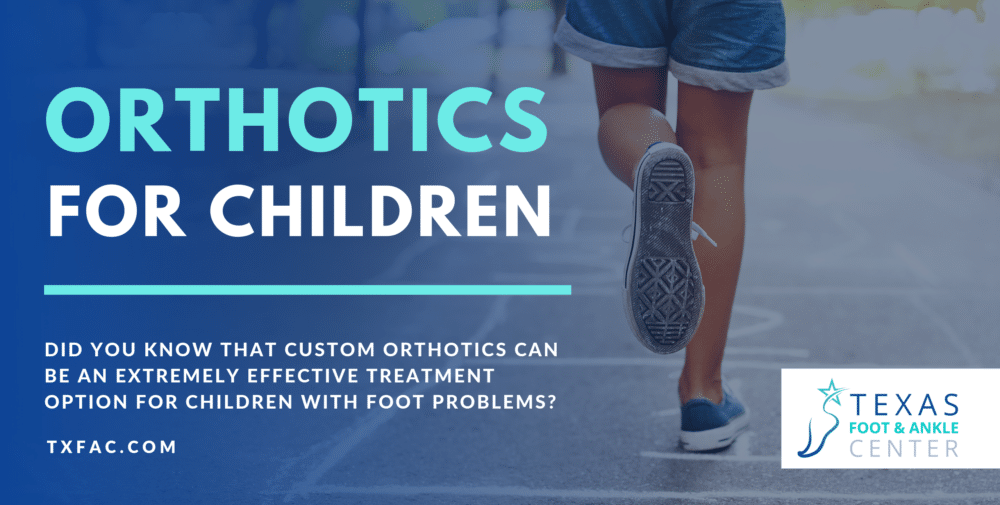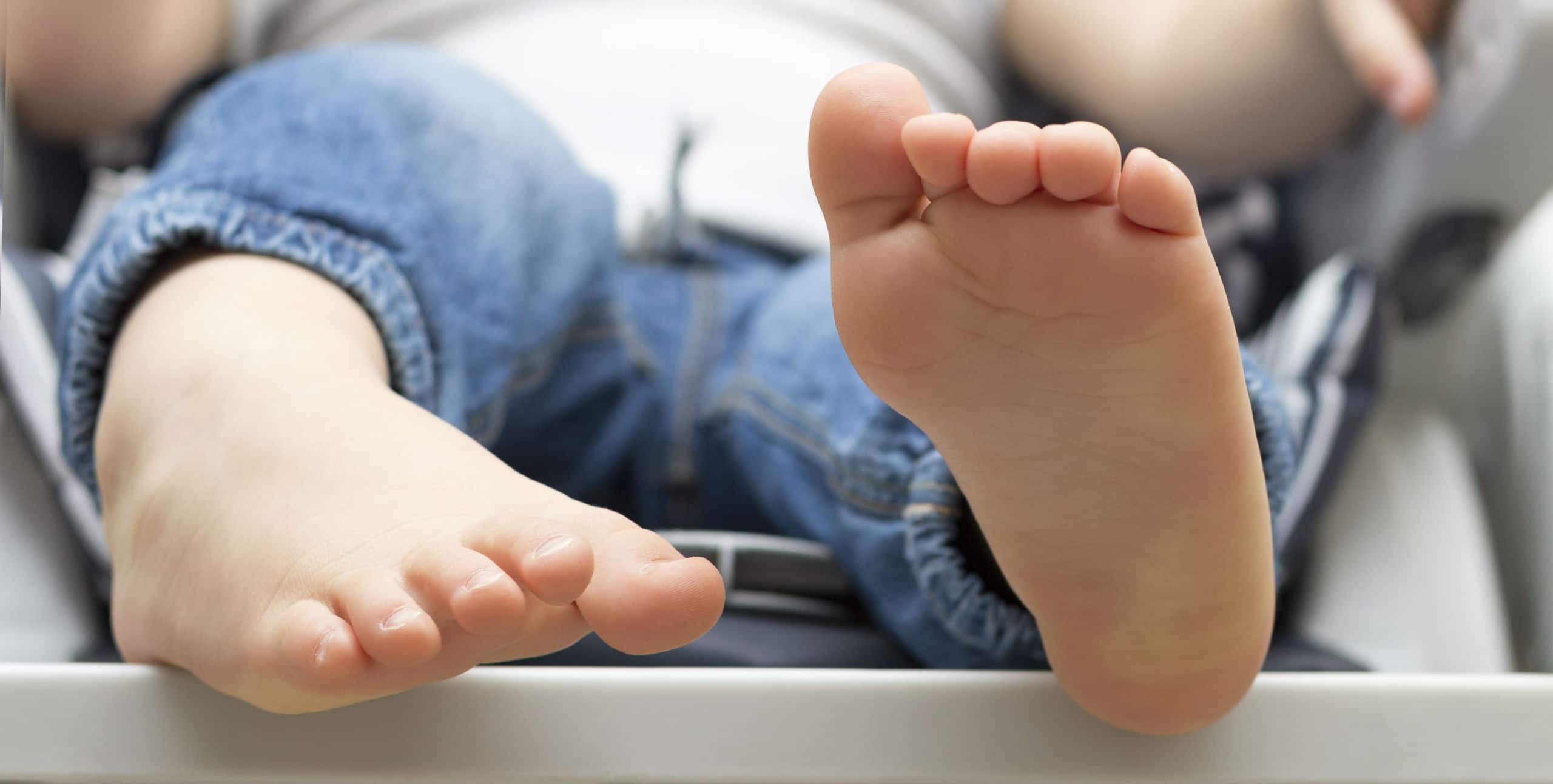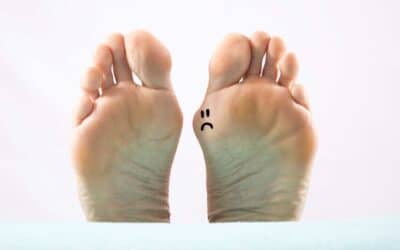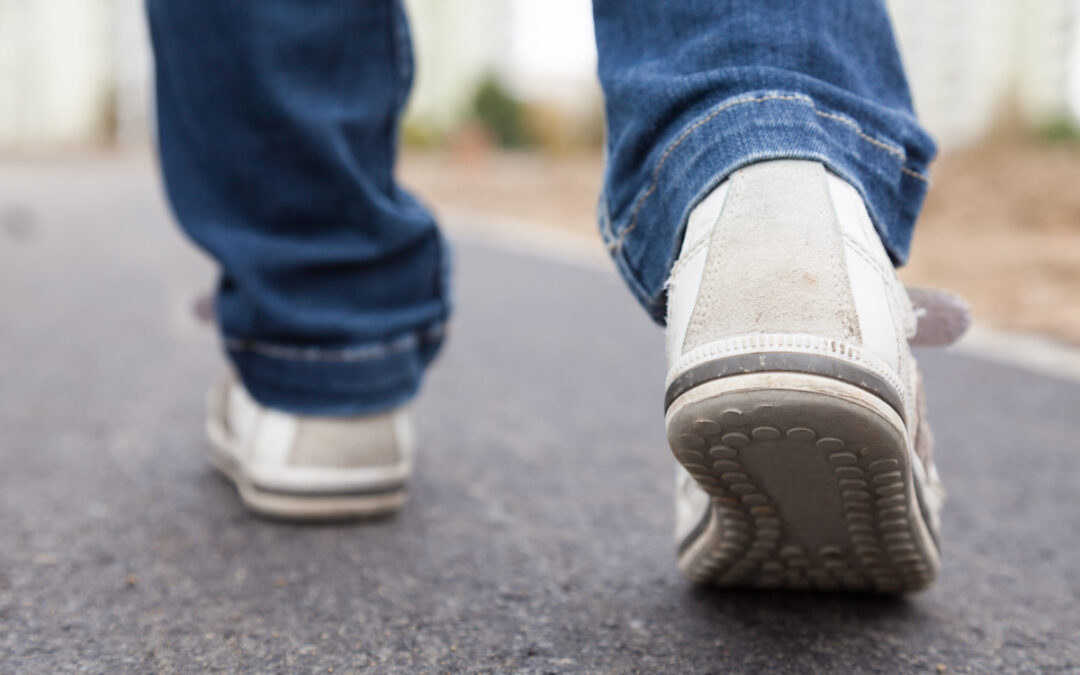Be honest.
When you think of “orthotics” and the people who wear them, you probably imagine working people in their 40s and up, struggling with increasing foot pain on the job or at home.
Hey, there’s nothing wrong with that image! A lot of our patients who wear orthotics do fit into that demographic. But certainly not all of them.
The truth is that orthotics are one of the most versatile treatment options we have for a wide variety of conditions, and patients of all ages—including children and teenagers.
In fact, the potential benefits of orthotics for growing kids can be huge, depending on their age and the condition of their feet.
Custom Orthotics: A Quick Overview
First, though, let’s give you a quick overview of what custom orthotics are for those who might not be familiar. (If you want a longer explanation, check out our service page on orthotics.)
Custom orthotics are specialized shoe inserts that take the place of your normal insoles in order to treat, manage, or prevent a foot problem. They can be made from a wide variety of materials in a wide variety of styles, in order to provide your feet with just what they need to function correctly—whether that’s extra arch support, extra cushioning, greater stability, motion control, or all of the above.
Unlike “off the shelf” cushioned insoles you get at stores, custom orthotics are prescribed by a podiatrist and crafted to fit your foot shape exactly. (At Texas Foot and Ankle Center, we fit these using our in-office 3D scanning technology.)
The Major Benefits of Orthotics for Kids
So let’s talk a bit about why custom orthotics can be so valuable for children and teenagers.
Right off the bat, you should know that it’s extremely important to intercept foot problems that develop in childhood as early as possible. You want to set your kids off on a healthy trajectory, and foot conditions that go undiagnosed and unaddressed early in life can lead to chronic pain and mobility problems later in life.
This is important not only in terms of correcting or preventing specific diagnoses, but also in terms of habit formation. A child with painful feet is going to be disinclined to active play. Instead, they’re going to be more likely to sit inside resting and watching TV instead of running and playing sports—not because they don’t enjoy activity, but simply because it hurts too much.
This can establish unhealthy habits and patterns of behavior that persist well into adulthood, even after the original diagnosis has been fixed.
So with that out of the way, let’s talk orthotics specifically.
Because they are a conservative treatment option, orthotics can be an especially valuable option for children. Whereas an adult might consider reconstructive surgery as an option for certain foot deformities, we generally want to avoid that option for kids as much as possible (even more so) because of the fact that they are still growing.
One of the most common pediatric conditions treated with orthotics is flat feet. While many children don’t develop permanent arches until reaching age 5 or so, others never develop an arch for one reason or another.
Occasionally, this can lead to an array of problems, including heel pain, arch pain, overpronation, and misalignment throughout the feet and legs. Over time, your child may develop a poor walking gait and chronic pain throughout the body, including the lower back.
Fortunately, this is exactly the kind of condition that orthotics are perfect for addressing. The right orthotics will not only provide extra support for the arch, but can realign the entire biomechanics of the foot, ankles, and legs. That means greatly reduced stress and fatigue on muscles and joints throughout the body.
Beyond flat feet, custom orthotics may be considered as a treatment option for many other common pediatric foot concerns, including:
- High arches (pes cavus)
- Sever’s disease / heel pain
- Leg length discrepancies
- Excessive foot pronation, which may be linked with Osgood-Schlatter disease and other painful complications
- In-toeing and out-toeing
- Juvenile bunions
- Frequent foot and ankle sports injuries
Not all of these conditions will necessarily require orthotics, or even treatment right away—children sometimes grow out of them naturally.
However, it’s wise to get your child checked out by a foot specialist any time you notice a child struggling with pain, unnatural walking gait, or other foot or ankle problems. If biomechanical issues persist beyond a certain age, or there are potentially serious causes at play, they should be addressed as soon as possible.
Additional Considerations When Prescribing Orthotics for Children
The main difference between orthotics for kids and orthotics for adults is, in short, the fact that a child’s feet—and in fact, their entire bodies—are growing and changing at a much more rapid rate.
It’s not just that their shoe size is increasing on an almost quarterly basis, either. In fact, based on the way your child was positioned in the uterus, it may take up to 6-7 years for their leg bones and joints to fully “unwind” and rotate into their correct position. Furthermore, bones don’t fully harden and reach “skeletal maturity” until the mid-teens in most cases.
On the one hand, this means that kids will tend to outgrow their orthotics much more frequently than adults do. While mom or dad might be able to get several years of use out of their inserts with proper care, junior might only get a year before needing to be fitted for a new pair.
But on the plus side, it’s also much more likely that your child will outgrow the need to wear orthotics entirely, as their feet continue to develop a more natural alignment over time. At each follow-up appointment, we’ll perform a careful examination to determine whether or not your child needs new orthotics, or no longer needs them.
That said, we don’t want to give you a false impression here: It’s possible that your child may have a permanent, ongoing foot concern that will require wearing orthotics on a continuing basis, even through adulthood.
While that understandably makes many kids and parents nervous, it might be helpful to think of wearing orthotics as similar to wearing glasses or contacts. Just like corrective lenses, custom orthotics allow a part of your body (in this case your feet, if not your entire skeletal system alignment) to function normally and comfortably when you wear them.
You wouldn’t worry too much about having to wear glasses or contacts, would you? Maybe at first, but pretty soon it becomes natural and you don’t really think about them anymore. More than half of Americans wear corrective eyewear at least occasionally, with very few problems.
The same really goes for orthotics. Kids might initially struggle in the first few weeks while they’re getting used to wearing them, but once they get settled in it typically becomes a non-issue.
Is your child suffering from foot pain or deformity, or an awkward gait? If anything at all is troubling your little one’s feet or ankles, bring them in to see the experts at Texas Foot & Ankle Center. Our team specializes in pediatric foot care, and we pride ourselves on offering thorough, effective, and advanced care options in a welcoming, gentle, and comfortable environment for patients of all ages.
To schedule an appointment with us, please call (214) 660-0777 today.




